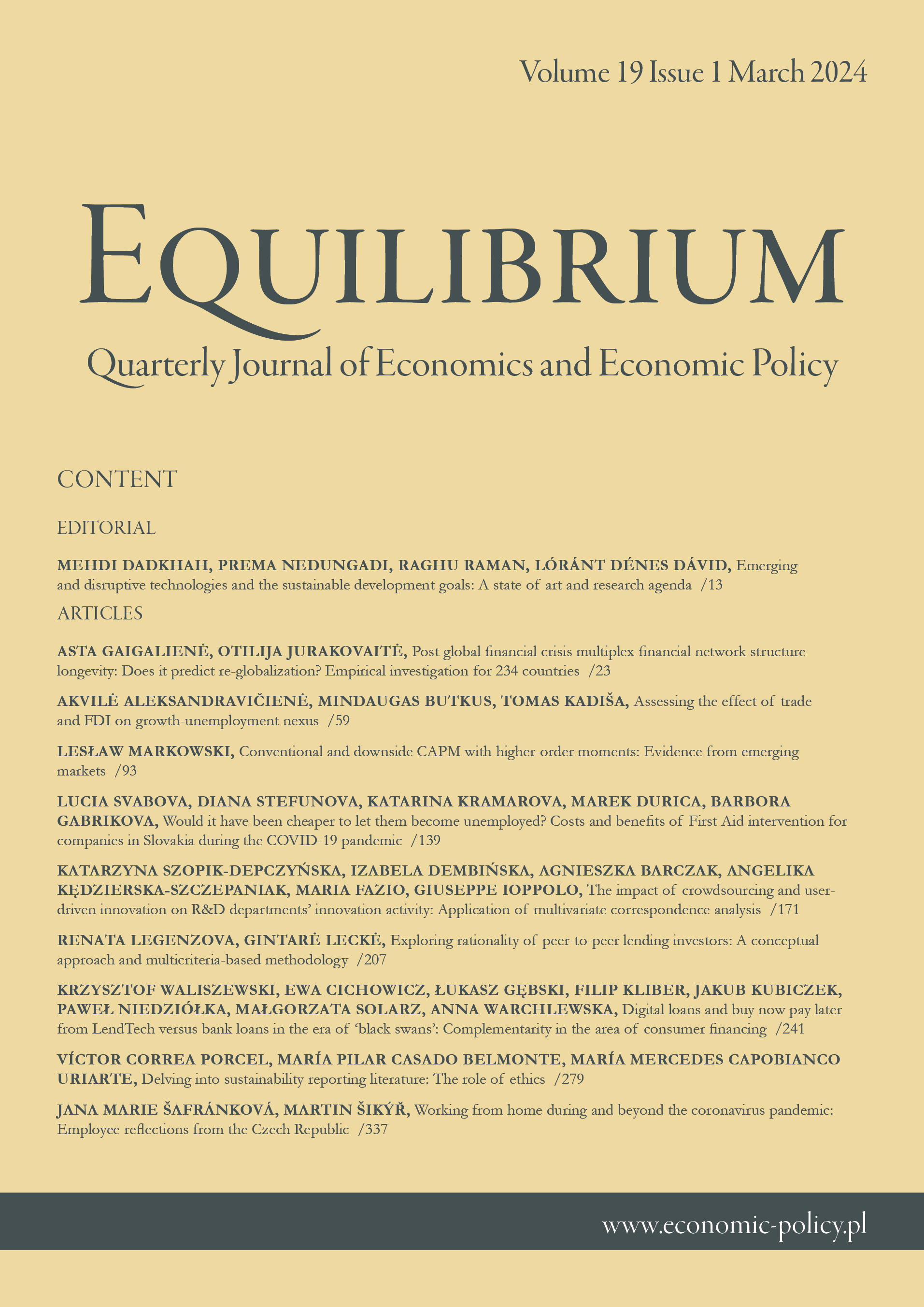中央银行如何决定利率?预测重要性的比较分析
IF 6.2
Q1 ECONOMICS
Equilibrium-Quarterly Journal of Economics and Economic Policy
Pub Date : 2017-06-30
DOI:10.24136/EQ.V12I2.15
引用次数: 4
摘要
研究背景:大多数现代中央银行(CBs)承认经济主体的预期在货币政策中的作用。为了塑造这些预期并克服滞后现象的发生,央行制作并公布宏观经济预测,并宣布这是其审议和货币政策调整的投入。这就是央行实施通胀预测目标的方式。就笔者所知,文献中没有对央行决策中实际预测重要性的正式评估。文章的目的:本文是一篇方法论的论文。它提供了一个指数,用来比较通胀预测在央行决策中的重要性。这一指标的制定是本文的主要目标。该指数在捷克和瑞典进行了实证检验。方法:与其他研究提供近似一些定性变量的工具相比,本文的方法部分提供了指数所涵盖因素的描述及其理由和点归因。该指标既适用于内生利率条件下,也适用于在固定利率条件下对商业银行决策的预测。它旨在涵盖低质量的数据,因为预测中心路径上的时间序列并不总是可访问的。在这种情况下,扇形图上只显示了预测与通胀目标的关系。结果与增加值:本文提出了捷克和瑞典的指标编制及其计算方法。因此,它有助于对央行行动进行事后评估的文献。这一正式评估为进一步得出通胀预测目标实施和预测对经济主体预期可能产生的影响的结论开辟了领域。本文章由计算机程序翻译,如有差异,请以英文原文为准。
How the central bank makes decision on interest rates? A comparative analysis of forecast importance
Research background: Most of the modern central banks (CBs) acknowledge the role of economic agents’ expectations in monetary policy. To shape these expectations and to over-come the lags occurrence, CBs produce and reveal macroeconomic forecast and declare that it is the input into their deliberations and monetary policy adjustments. This is how central banks implement inflation forecast targeting. The formal assessments of actual forecast importance in central banks’ decisions is not presented in the literature — to the best author’s knowledge. Purpose of the article: The paper is of methodological nature. It presents the index that compares inflation forecast importance in the central banks decisions. The elaboration of such index is the main goal of the paper. The index is tested empirically for Czechia and Sweden. Methods: Comparably to other research presenting the tools that approximate some qualitative variables, the methodological part of the paper offers the description of the factors covered by the index with their justification and point attribution. The index is suitable to assess CBs decision’s accordance with the forecast produced under constant rate assumption as well as under endogenous interest rates. It is designed to cover low quality data as the time series on the central path of the forecast are not always accessible. In this cases only the relation of the forecast to the inflation target is revealed on the fan charts. Findings & Value added: The index elaboration and its calculation for Czechia and Sweden is presented in the paper. It thus contributes to the literature on ex post assessment of the central bank’s actions. This formalized assessment opens the field for making further con-clusions on inflation forecast targeting implementations and possible impact of the forecast on the economic agents' expectations.
求助全文
通过发布文献求助,成功后即可免费获取论文全文。
去求助
来源期刊
CiteScore
9.20
自引率
3.50%
发文量
28
审稿时长
36 weeks
期刊介绍:
Equilibrium. Quarterly Journal of Economics and Economic Policy is a scientific journal dedicated to economics, which is the result of close cooperation between the Instytut Badań Gospodarczych/Institute of Economic Research (Poland) and Polish Economic Society and leading European universities. The journal constitutes a platform for exchange of views of the scientific community, as well as reflects the current status and trends of world science and economy.
The journal especially welcome empirical articles making use of quantitative methods in: Macroeconomics and Monetary Economics, International Economics, Financial Economics and Banking, Public Economics, Business Economics, Labor and Demographic Economics, Economic Development, and Technological Change, and Growth.
Current most preferable topics and special issues:
The economics of artificial intelligence: business potentials and risks;
Digitalization and entrepreneurship in economics;
Sustainable socio-economic development, environmental and ecological economics;
Transition in the energy market (improving energy efficiency, alternative energy sources, renewable energy, energy security).

 求助内容:
求助内容: 应助结果提醒方式:
应助结果提醒方式:


